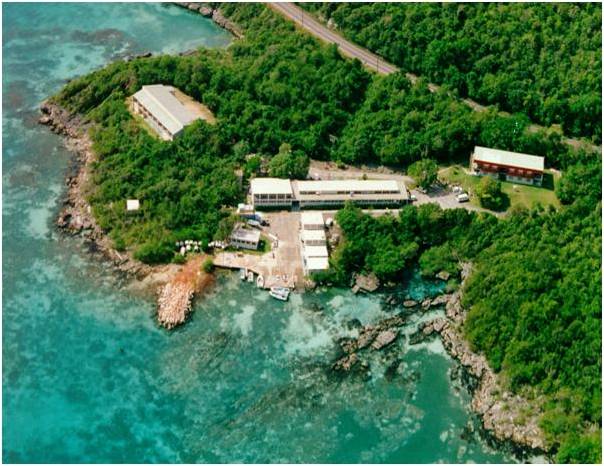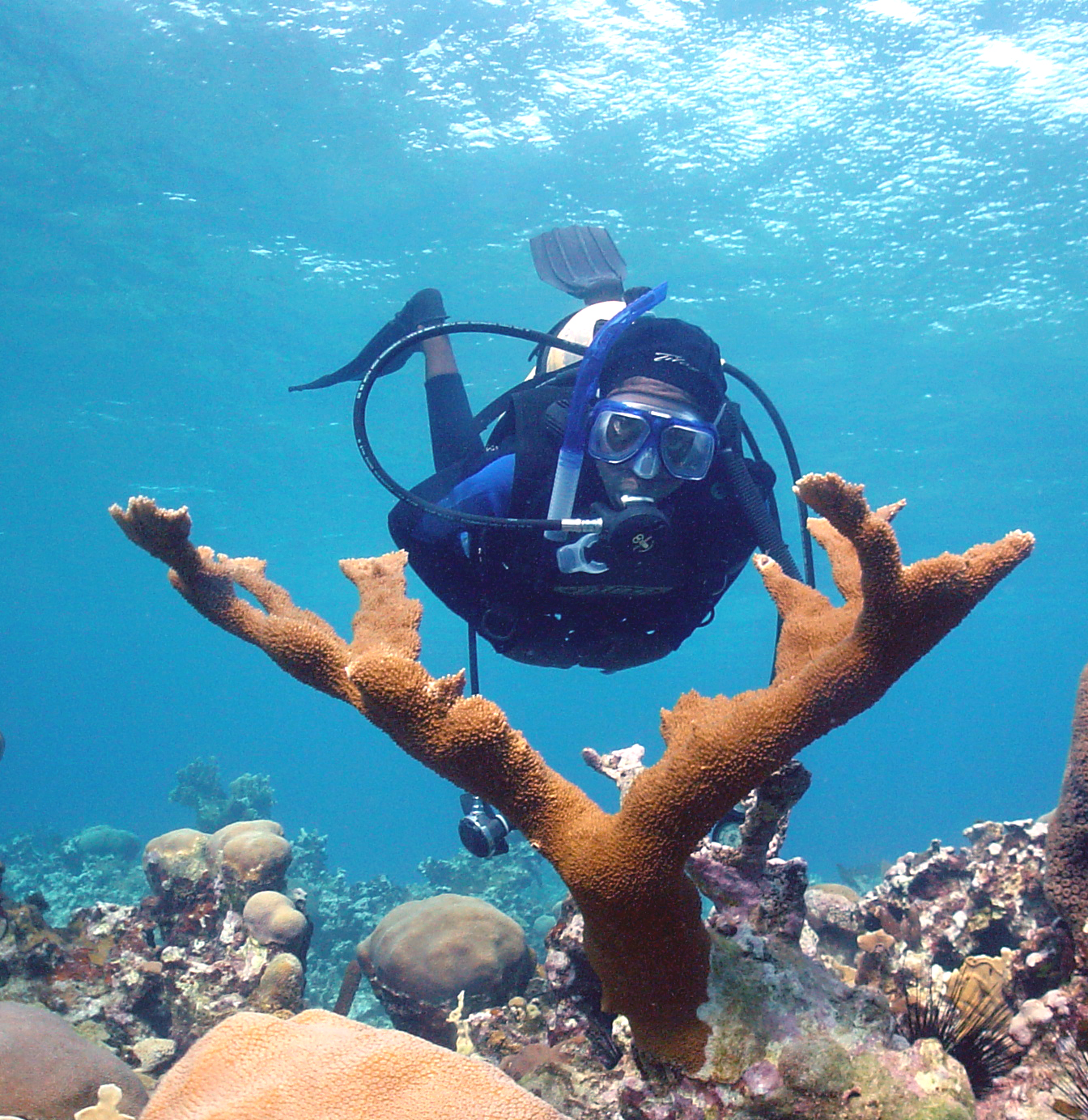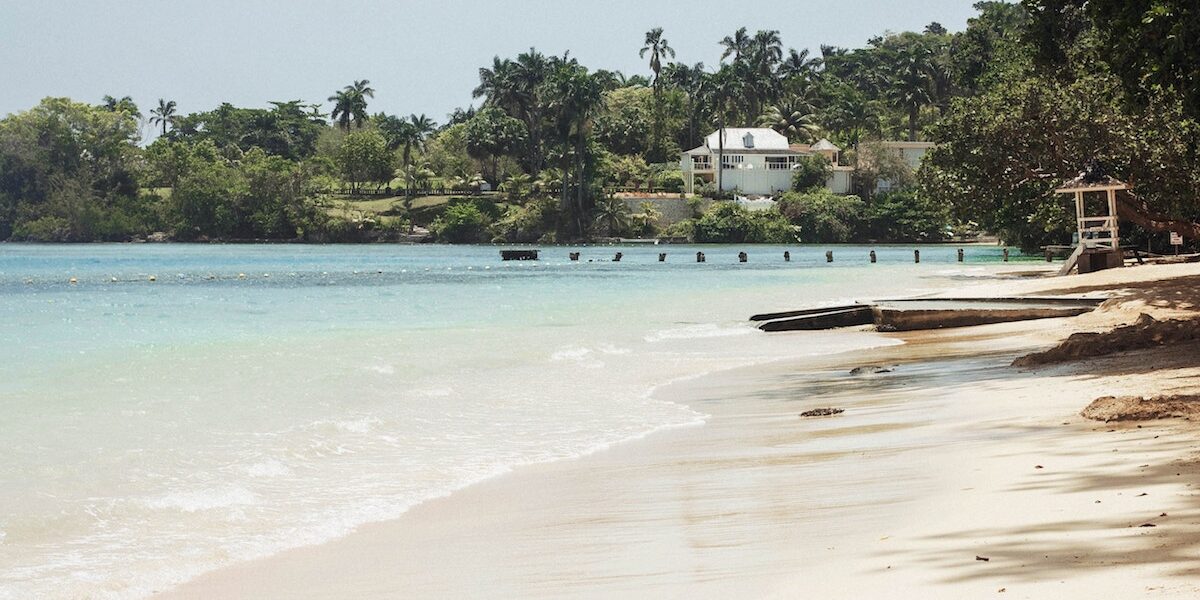by Mark J. Spalding, President of the Ocean Foundation
On many of my trips I seem to spend more time with interesting people in windowless conference rooms than by the water or in the diverse places where people who care about the ocean work. The last trip of April was an exception. I was lucky enough to spend time with the people of the Discovery Bay Marine Laboratory, which is about an hour from Jamaica’s Montego Bay airport.
 The Lab is a facility of the University of West Indies and operates under the auspices of the Centre for Marine Sciences, which also hosts the Caribbean Coastal Data Centre. Discovery Bay Marine Lab is dedicated to both research and educating students in biology, ecology, geology, hydrology, and other sciences. In addition to its labs, boats, and other facilities, Discovery Bay is home to the only hyperbaric chamber on the island—equipment that helps divers recover from decompression illness (also known as the “bends”).
The Lab is a facility of the University of West Indies and operates under the auspices of the Centre for Marine Sciences, which also hosts the Caribbean Coastal Data Centre. Discovery Bay Marine Lab is dedicated to both research and educating students in biology, ecology, geology, hydrology, and other sciences. In addition to its labs, boats, and other facilities, Discovery Bay is home to the only hyperbaric chamber on the island—equipment that helps divers recover from decompression illness (also known as the “bends”).
Among Discovery Marine Lab’s goals is the application of the research to improved management of Jamaica’s vulnerable coastal zone. Jamaica’s reefs and nearshore waters are subject to extreme fishing pressures. As a result, there are fewer and fewer areas where larger, more valuable species can be found. Not only must efforts be made to identify where marine reserves and strong management plans can help Jamaica’s reef systems recover, but also the human health component must be addressed. For the past few decades, there have been more and more cases of decompression illness in the free diving fishermen as they spend more time under water at greater depths to compensate for the shortage of shallow water fish, lobster, and conch—the more traditional fisheries that supported communities.
During my visit, I met with Dr. Dayne Buddo a Marine Biologist expert in Marine Invasive Alien Species, Camilo Trench, Chief Scientific Officer, and Denise Henry an Environmental Biologist. She is currently a Scientific Officer at the DBML, working on a Seagrass Restoration Project. In addition to a detailed tour of the facilities we spent time talking about blue carbon and their mangrove and seagrass restoration projects. Denise and I had an especially great conversation comparing our SeaGrass Grow methodologies with those she was testing in Jamaica. We also talked about how much success they are having in harvesting alien invasive Lion Fish from their reef areas. And, I learned about their coral nursery and plans to do coral restoration and how it relates to the need to reduce nutrient-laden effluents and runoff as well as the overriding factor of overfishing. In Jamaica, reef fisheries support as many as 20,000 artisanal fishermen, but those fishers may lose their subsistence because of how badly depleted the sea has become.
 The resulting lack of fish causes an ecosystem imbalance that leads to the dominance of coral predators. Sadly, as our new friends from DBML know, to restore coral reefs they are going to need an abundance of fish and lobsters, within effective no-take zones; something that will take a while to accomplish in Jamaica. We are all monitoring the success of Bluefields Bay, a large no-take zone on the west side of the island, which seems to be helping biomass recover. Near the DBML is the Oracabessa Bay fish sanctuary, which we visited. It is smaller, and only a few years old. So there is much to do. In the meantime, our colleague Austin Bowden-Kerby, Senior Scientist at Counterpart International, says Jamaicans need to collect “fragments from the few surviving corals that have survived the disease epidemics and bleaching events (they are genetic treasures adapted to climate change), and then cultivate them in nurseries- keeping them alive and well for replanting.”
The resulting lack of fish causes an ecosystem imbalance that leads to the dominance of coral predators. Sadly, as our new friends from DBML know, to restore coral reefs they are going to need an abundance of fish and lobsters, within effective no-take zones; something that will take a while to accomplish in Jamaica. We are all monitoring the success of Bluefields Bay, a large no-take zone on the west side of the island, which seems to be helping biomass recover. Near the DBML is the Oracabessa Bay fish sanctuary, which we visited. It is smaller, and only a few years old. So there is much to do. In the meantime, our colleague Austin Bowden-Kerby, Senior Scientist at Counterpart International, says Jamaicans need to collect “fragments from the few surviving corals that have survived the disease epidemics and bleaching events (they are genetic treasures adapted to climate change), and then cultivate them in nurseries- keeping them alive and well for replanting.”
I saw how much work is being accomplished on a shoestring, and how much more needs to be done to help the people of Jamaica and the marine resources on which their economy depends. It is always inspiring to spend time with dedicated people like the folks at the Discovery Bay Marine Laboratory in Jamaica.
Update: Four More Fish Sanctuaries to be Established via The Jamaican Information Service, May 9, 2015
Photo Credit: Discovery Bay Marine Laboratory, MJC Crabbe via Marine Photobank







